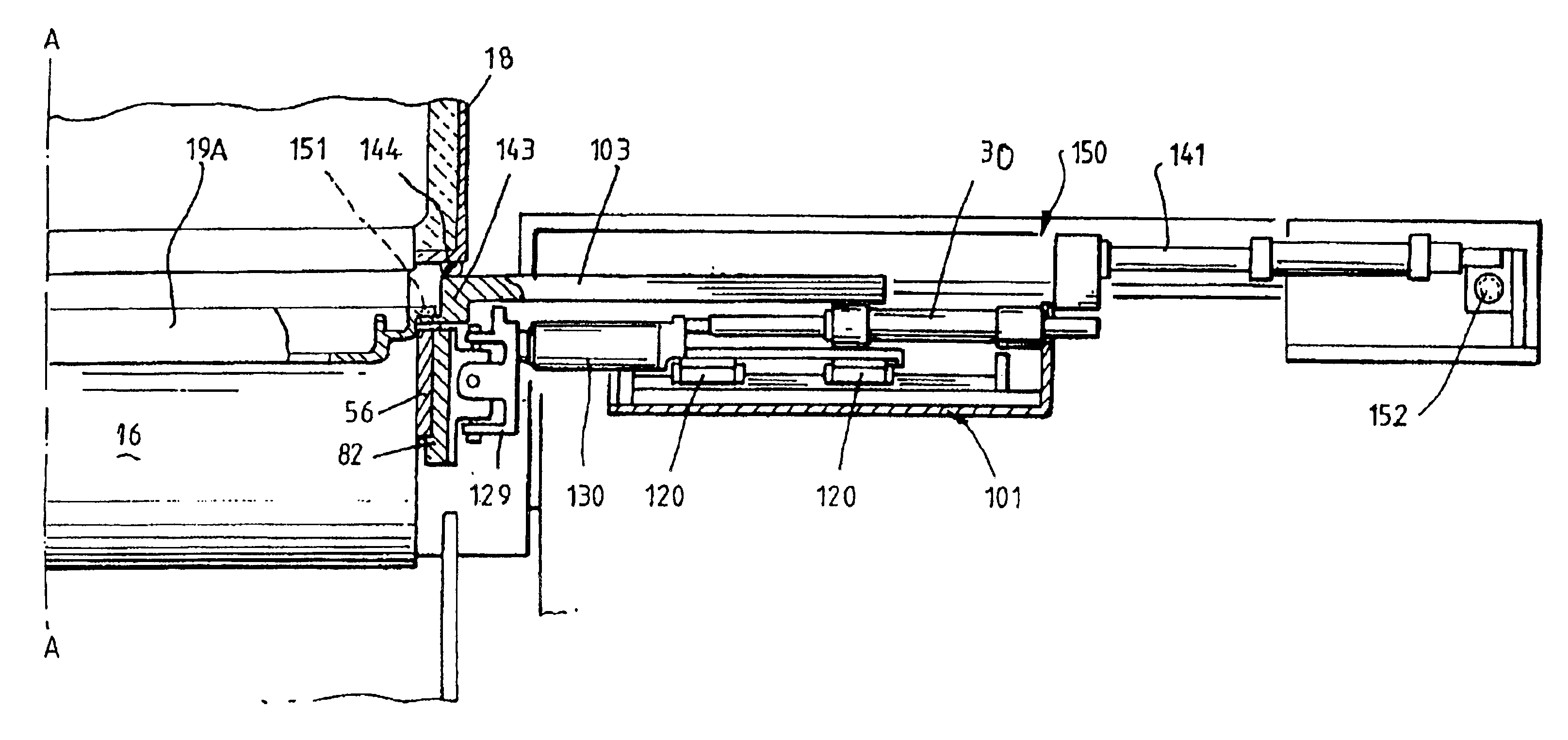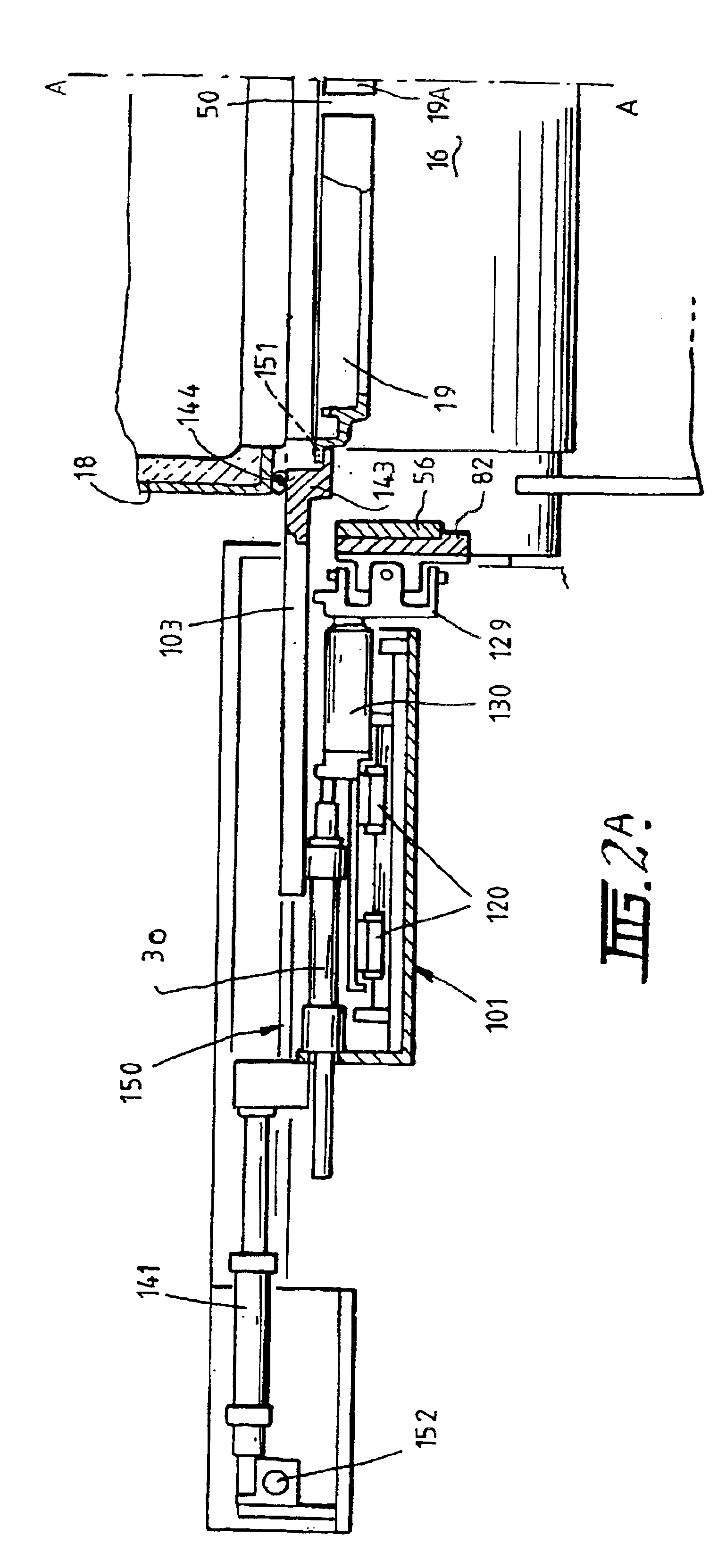Strip casting apparatus
a casting apparatus and strip technology, applied in the field of metal strip casting, can solve the problems of high local heat loss rate, exacerbate the problem of strip defects, and generalized “snake eggs” defects, and achieve the effect of inhibiting the formation of skulls
- Summary
- Abstract
- Description
- Claims
- Application Information
AI Technical Summary
Benefits of technology
Problems solved by technology
Method used
Image
Examples
Embodiment Construction
[0057]The illustrated caster comprises a main machine frame 11 which supports a casting roll module in the form of a cassette 13 which can be moved into an operative position in the caster as a unit, and can readily be removed as needed when the casting rolls are to be replaced. Cassette 13 carries a pair of casting rolls 16 arranged generally in parallel to form a nip 69 there between. Molten metal is supplied during a casting operation, a campaign, from a ladle (not shown) via a tundish 17, distributor 18 and delivery nozzle 19 to create a casting pool 68 supported on the casting rolls 16 above the nip. The casting pool 68 is confined at the ends of the nip by a pair of side confining plates 56 as explained below. Casting rolls 16 are water cooled so that melt shells solidify on the moving roll surfaces and are brought together at the nip 69 to produce a solidified strip product 20 extending downwardly from the nip. This product may be cooled and fed to a standard coiler.
[0058]Cas...
PUM
| Property | Measurement | Unit |
|---|---|---|
| distance | aaaaa | aaaaa |
| distance | aaaaa | aaaaa |
| distance | aaaaa | aaaaa |
Abstract
Description
Claims
Application Information
 Login to View More
Login to View More - R&D
- Intellectual Property
- Life Sciences
- Materials
- Tech Scout
- Unparalleled Data Quality
- Higher Quality Content
- 60% Fewer Hallucinations
Browse by: Latest US Patents, China's latest patents, Technical Efficacy Thesaurus, Application Domain, Technology Topic, Popular Technical Reports.
© 2025 PatSnap. All rights reserved.Legal|Privacy policy|Modern Slavery Act Transparency Statement|Sitemap|About US| Contact US: help@patsnap.com



